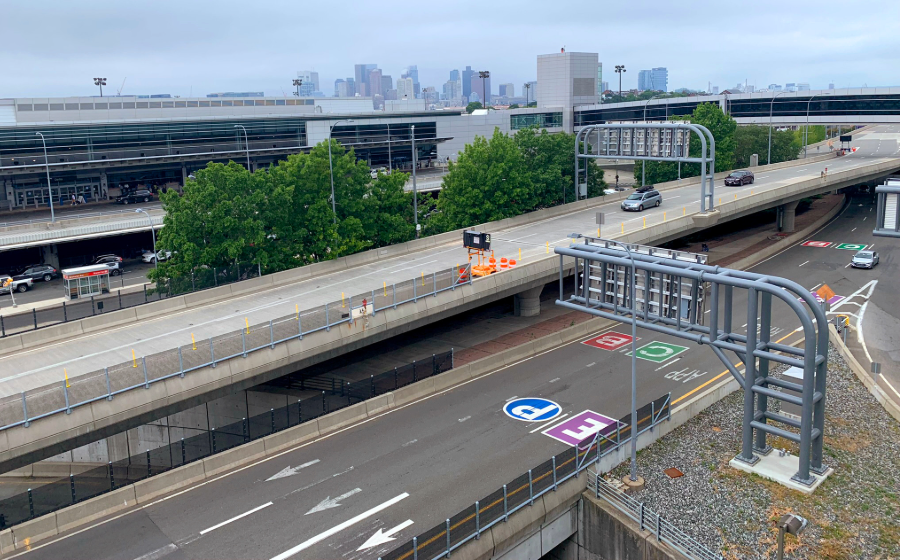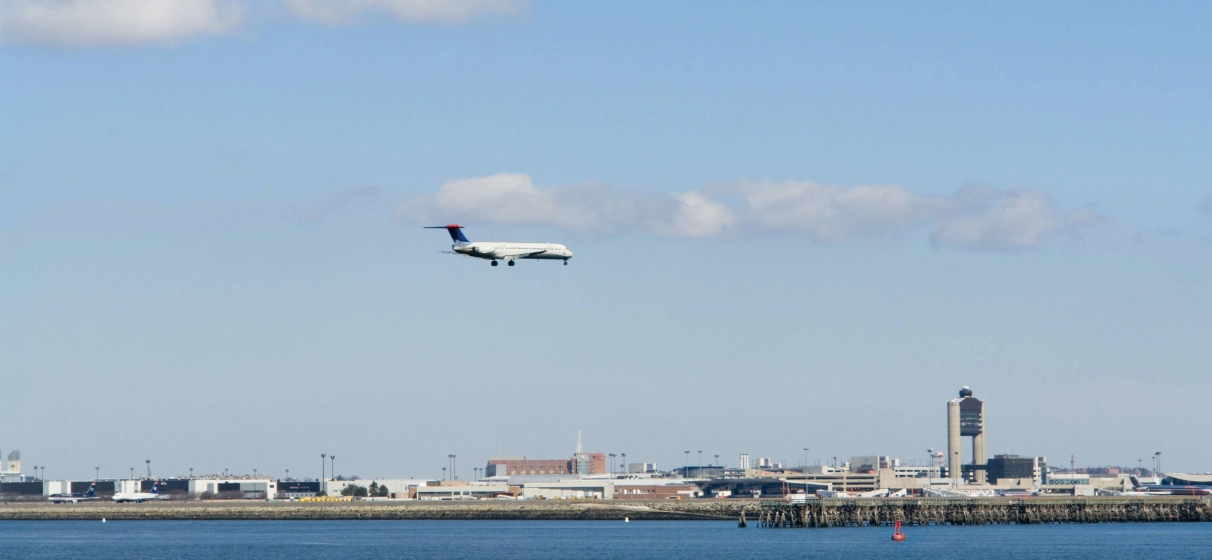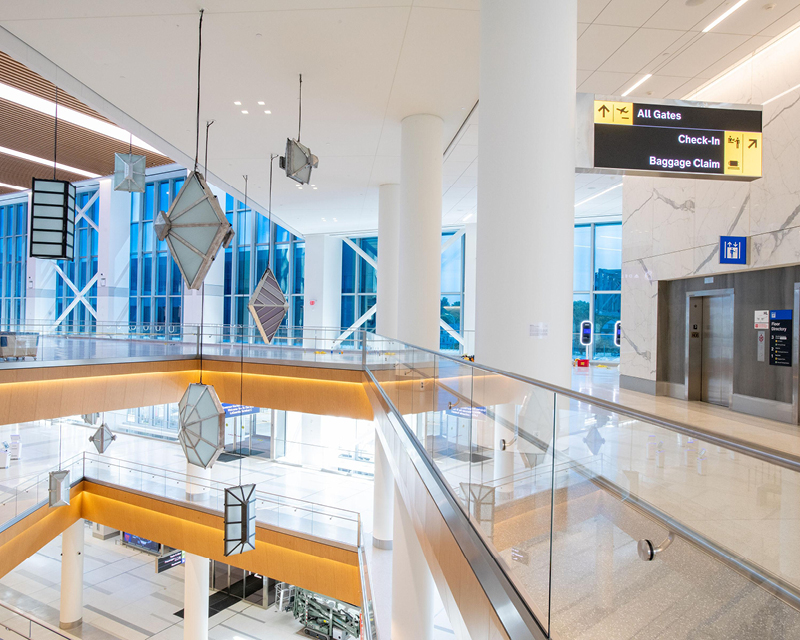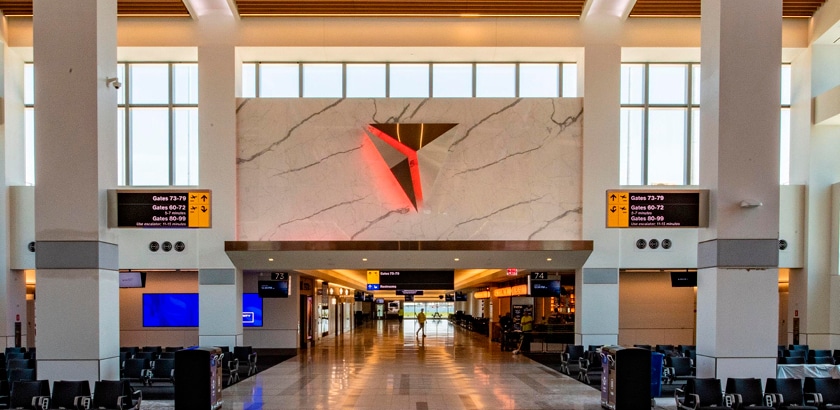Consistent with capital improvements being made throughout the aviation market sector in the United States, the Massachusetts Port Authority (Massport) is currently overseeing significant investments across its airports and port facilities that aim to meet growing demand while improving customer service, reaching environmental and sustainability goals and enhancing safety and security.
STV, and its multidisciplinary design and engineering team, is currently partnering with Massport to deliver a broad range of infrastructure – including new roadways, sidewalks and facilities – at the authority’s busiest airport, Boston’s Logan International Airport.
Last year, Logan served 43 million passengers, breaking its previous record of 42.5 million set in 2019. This demonstrates a full recovery from the COVID-19 pandemic’s downturn. As a result of this growth, Massport has initiated several capital projects, ranging from civil infrastructure improvements and terminal modernizations to net-zero infrastructure investments.
Enhanced Roadways at Logan Airport

For the past three years, STV’s civil engineering team has been performing condition assessments and design improvements for Logan’s landside roadway and sidewalk network. The scope of this program includes the rehabilitation and other enhancements at 16 sites throughout the airport, including several projects around Logan’s Terminal A. These improvements include assessing civil infrastructure for any deficiencies in need of repair, roadway rehabilitation, including Mill and Overlay and full depth reclamation, bridge repairs, as well as sidewalks, ramps, crosswalks and drop off zones for ADA compliance, such as wayfinding signs.
“Following an award of a federal grant from the Bipartisan Infrastructure Bill, our team worked closely with Massport to identify improvements, taking our design from 0 to 100% in about three months,” said Preethi Sreeraj, engineering director.
The design process was fast-tracked to meet grant application deadlines while still adhering to rigorous airport standards. Additionally, STV worked closely with Massport’s Capital Programs department and the airport’s operations team on construction phasing to minimize the program’s impact on Logan’s visitors. That included phasing construction so it would not occur on major travel holidays while also pushing many activities to evenings and other off-peak travel times.
“It was crucial for regular traffic in and around the airport to be maintained throughout the program,” Sreeraj said. “This was a challenging element to coordinate, but we collaborated with the airport, contractors and other stakeholders and were successful.”
Optimizing Logan’s North Service Area

Beyond these roadway improvements, STV’s building design team, in partnership with AECOM, is supporting Massport’s plan to optimize the North Service Area, which is the last available piece of undeveloped real estate at Logan International Airport.
This area, overseen by Massport’s Facilities Group, houses critical maintenance and snow removal operations at Logan Airport. Additionally, the North Service Area is home to an existing bus depot that will be reconfigured for the maintenance of small to medium-sized Massport-owned equipment, two flight kitchens and existing vehicle storage facilities.
STV is providing a full suite of architectural and engineering design services for a key piece of this initiative, the new Large Vehicle Storage and Maintenance Facility (LVSMF). The LVSMF program consolidates five (5) existing buildings at Logan to support the maintenance of approximately 600 vehicles owned by Massport, including high bay maintenance areas for heavy equipment, including Vammas – unique snow removal vehicles – and large air fire rescue ladder trucks. Additionally, the building will house employee offices and work areas, the electrical department, sign and carpentry shops, a central stock room, and a new, expanded large vehicle fueling station.
As part of this program, STV’s team is also designing a new salt shed and sand shed, the relocation and reconfiguration of the airport’s transfer station, and developing a new floodberm, which is part of the City of Boston’s flood resiliency mitigation strategy. Other projects within this contract include a new airside service road, the relocation of an existing fuel station and FAA structures, a new power switching station and high voltage transformers.
“Our team has navigated several intricacies with this client, including FAA equipment relocations and other design complexities, always taking a strategic and calculated approach,” said Benjamin Lassel, project manager. “Together, in concert with all of our other work supporting Massport and Logan’s growth, the project represents our most comprehensive endeavor at the airport to date.”







